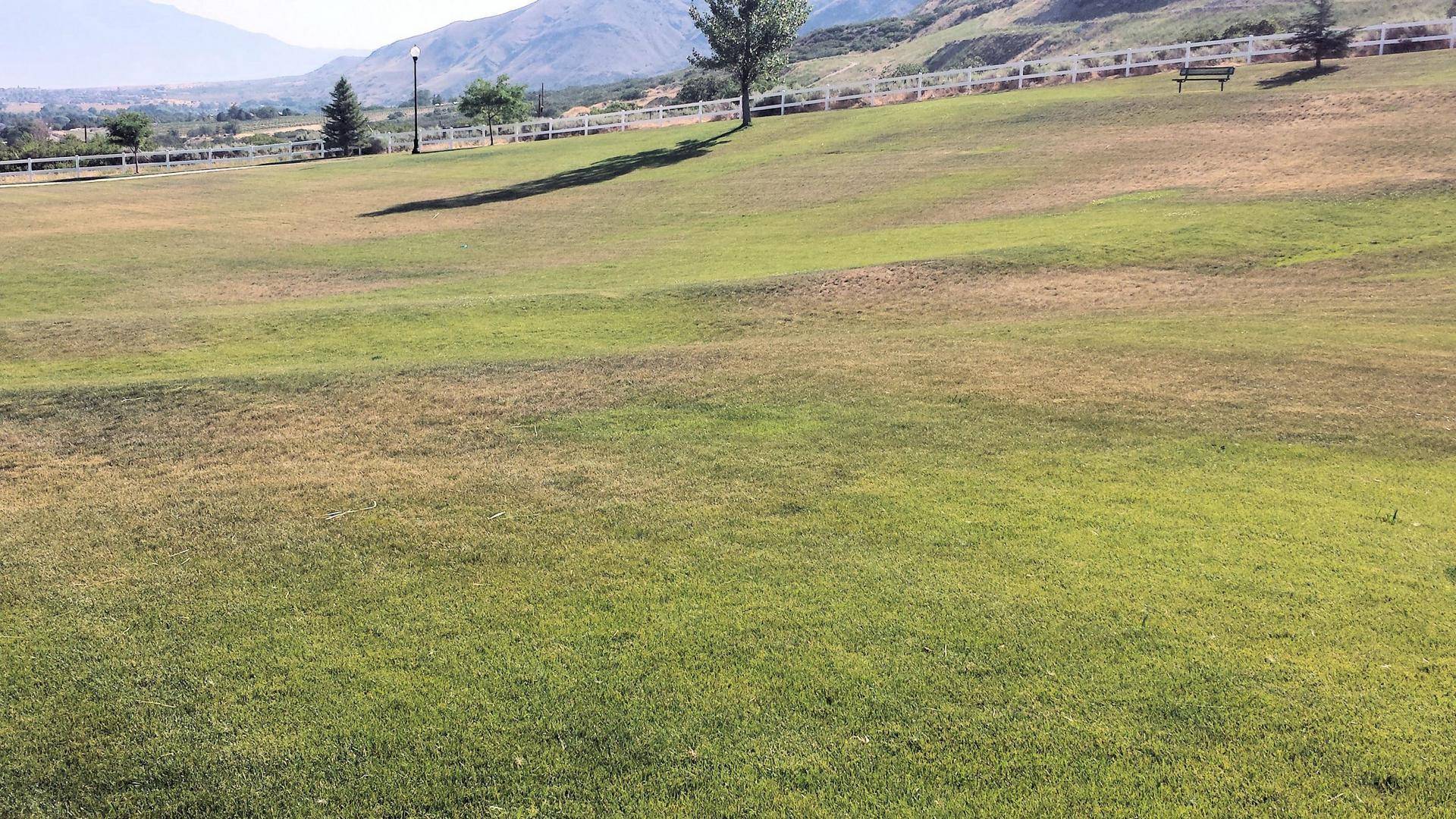By Taun Beddes
Utah is currently in one of the worst droughts since recording began in the late 1800s. Many reservoirs are at an all-time low and some are drying up completely. Because of this, a statewide alarm was sounded by the governor asking the public to conserve water.
Many areas in central and northern Utah are being asked to irrigate lawns no more than twice per week, and in southern Utah, no more than three times per week. An irrigation cycle is considered 20 minutes for pop-up sprinklers and 40 minutes for impact rotor sprinklers.
Even with this reduced irrigation schedule, lawns can stay fairly green but will develop brown patches; however, the brown patches do not mean the lawn is dying. Lawns go dormant with excessive heat and reduced water, which means the roots and crowns are alive and healthy even though the blades turn brown and stop growing. Lawns can survive in a dormant state with as little as ½ to 1 inch of irrigation monthly.
After the last severe drought ended, Utah State University Extension horticulturists saw a wide variety of trees and shrubs with disease and pest infestations, particularly pine and spruce trees. To prevent this from happening again, it’s important to care for the most important assets in your yard. Consider these tips.
* Trees and shrubs should be given top priority – not only because they are the most expensive plants to buy, but they also add the most value to a landscape. In 2013, California researchers found that trees and shrubs that shade or partially shade lawns in dry climates can help decrease overall water needs. The canopies decrease both the amount of direct sun that reaches the lawn and the temperature, which can help lower the amount of water lost to evaporation. Healthy trees in a landscape could potentially raise a home’s value anywhere from 3 to 20% and reduce heating and cooling needs by 20 to 50%.
* Some homeowners have decided to let their lawns go dormant to further reduce their water consumption. In these situations, it is imperative that trees receive irrigation at least twice monthly with water that penetrates 18 inches into the soil. To do this, hose-end sprinklers under a tree’s canopy work well. Irrigate for a couple of hours, take a break for another few hours, then water again in order to get water deep enough.
* Recognize that due to the drought, no landscapes will look perfect this year. Brown spots in the lawn are part of living in a desert in the summer, and that’s okay. Turf is tough and can handle being a little thirsty. Just remember to give your trees occasional extra water to keep them healthy through this year’s heat and for years to come.

